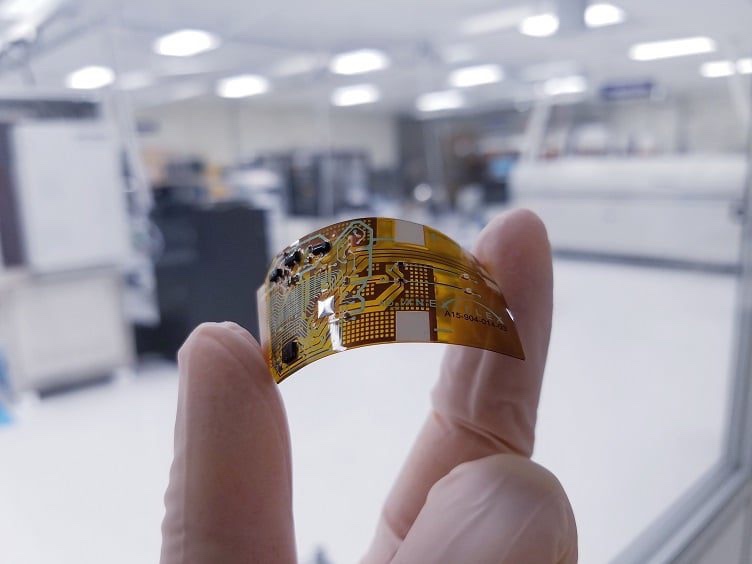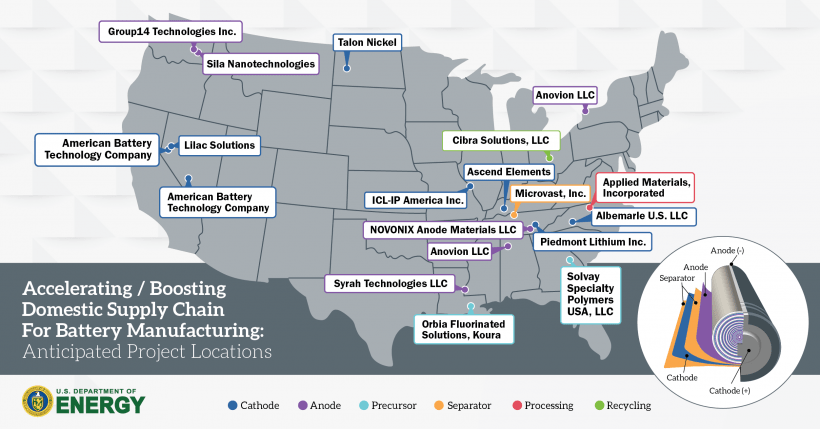In a development that has become routine for the Biden administration, the White House announced a total of more than $6 billion in new funding opportunities for advanced manufacturing applications in the two weeks prior to Thanksgiving 2023. First, on November 15, the Department of Energy (DOE) announced up to $3.5 billion in funding from the Bipartisan Infrastructure Law (BIL), dedicated to stimulating “domestic production of advanced batteries and battery materials nationwide”.
This is the second phase of $6 billion in funding for the US domestic battery supply chain from the BIL, with the first phase having been awarded in October 2022. Applicants must submit concept papers to DOE’s Office of Manufacturing and Energy Supply Chains (MESC) by January 9, 2024, and must submit their full applications by March 19, 2024.
Next, on November 20, the administration announced about $3 billion in upcoming funding for the National Advanced Packaging Manufacturing Program (NAPMP). Although the National Institute of Standards and Technology (NIST), the administering organization for the funds, already gave a webinar about the NAPMP on November 27, interested individuals can contact madeline.broas@chips.gov for more information.
NIST also published a brief paper, “The Vision for the National Advanced Packaging Manufacturing Program”, which can be downloaded here. Finally, it should be pointed out that the specific funding opportunities for NAPMP won’t be announced until 2024, giving potential applicants plenty of time to prepare in anticipation of the release of the specific details.

In a press release about the $3.5 billion in funding opportunities for US battery and battery materials supply chains, US Secretary of Energy Jennifer Granholm said, “Positioning the United States front and center to meet the growing demand for advanced batteries is how we boost our global competitiveness, maintain and create good-paying jobs, and strengthen our clean energy economy. President Biden’s historic investments are giving the boost needed to build a robust domestic battery supply chain that is Made-in-America.” In a press release about the upcoming $3 billion in funding for the NAPMP, US Secretary of Commerce Gina Raimondo said, “Making substantial investments in domestic packaging capabilities and R&D is critical to creating a thriving semiconductor ecosystem in America. We need to make sure new leading-edge chip architectures can be invented in our research labs, designed for every end-use application, manufactured at scale and packaged with the most advanced technologies. This new vision for advanced packaging will enable us to implement President Biden’s Investing in America agenda and make our country a leader in leading-edge semiconductor manufacturing.”

Secretary Raimondo‘s reference to “chip architectures” that can be “packaged with the most advanced technologies” is almost certainly — at least in part — an allusion to 3D printing: specifically, the use of 3D printing as one of the principle ways to package chiplets, which Michael Molitch-Hou and I wrote about in a 3DPrint.comPRO article published in August.
Additive manufacturing (AM) companies involved in the emerging US domestic supply chain for batteries include 6K, which received $50 million in the first round of battery funding in October 2022, and IperionX, which appears poised to be one of the main beneficiaries of the building of an end-to-end domestic supply chain for US titanium products. But the main takeaway from both announcements should probably be that the growth trajectory for demand is increasing so quickly that the possibilities for US-based AM companies is virtually limitless.
At the same time, it is also becoming increasingly clear that the greatest opportunities await those companies that enter the government market as early as possible in the investment cycle, the key timeline for which seems to be 2025-2030. On its own, this suggests how critical a year for getting proactive 2024 could be, meaning that right now is the time for companies hoping to get into the US government market to learn how best to do so.
Subscribe to Our Email Newsletter
Stay up-to-date on all the latest news from the 3D printing industry and receive information and offers from third party vendors.




